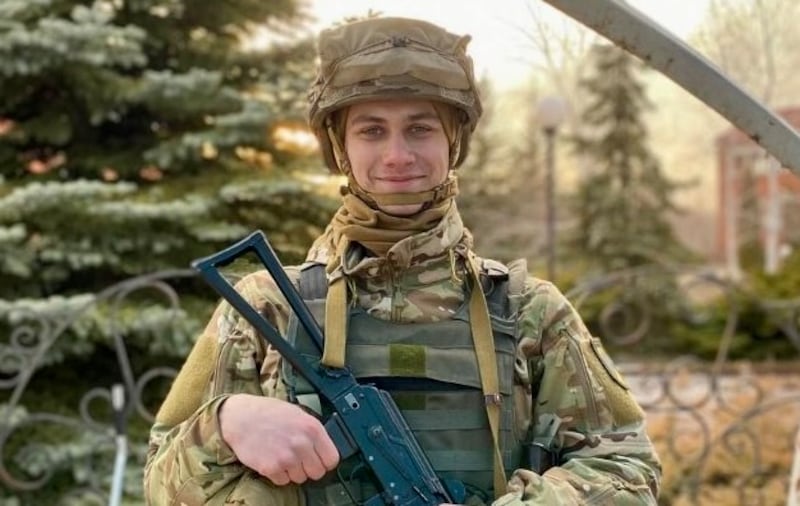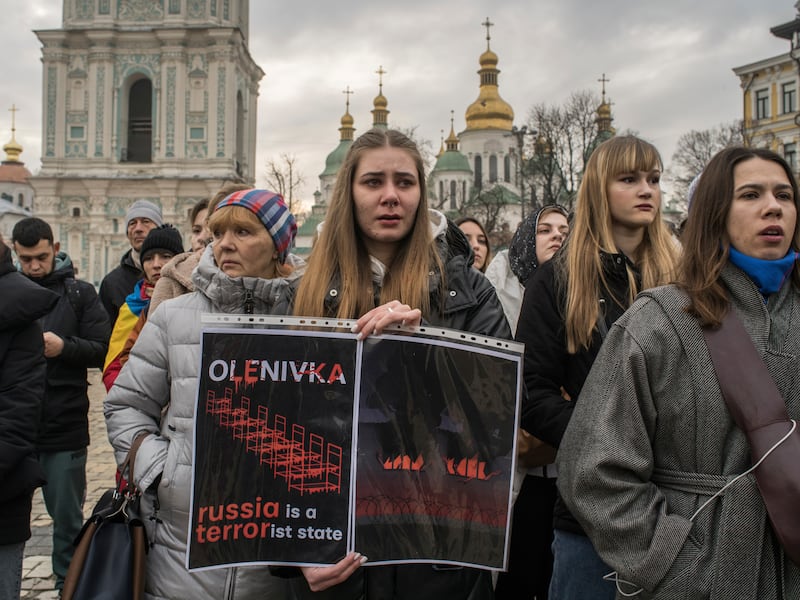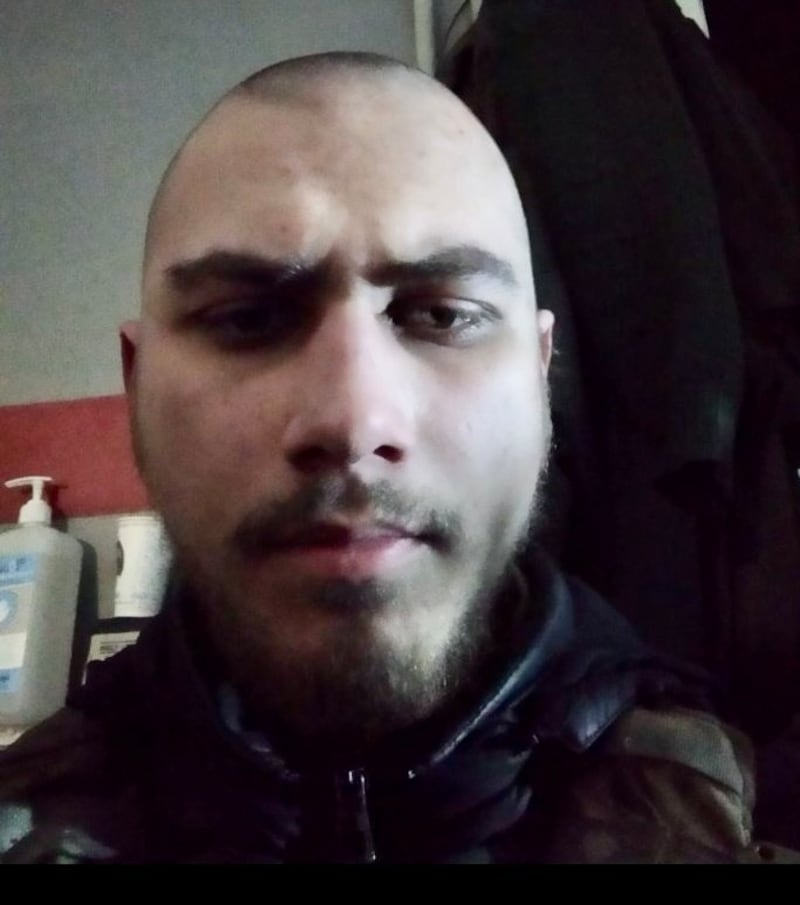The battle for Bakhmut left Kostyantyn Kolyenov with life-changing injuries, but as he recovers in a clinic on the other side of Ukraine, he refuses to accept that his war is over.
“I didn’t fight enough. I shouldn’t be here,” he says in a rehabilitation centre in Lviv, 1,000km west of Bakhmut and a similar distance from his home city of Kharkiv.
“My heart is being torn up here because I didn’t get my son out of that sh*t. I’m not a hero, I’m just speaking as a father.”
Kostyantyn (46) lost his right leg last November after fighting for two months at Bakhmut with the Aidar battalion of the Ukrainian army, which he joined following Russia’s occupation of the strategic city of Mariupol and its capture of his son, Danylo (20).
RM Block
Danylo was among an estimated 2,000 Ukrainian soldiers who held out for weeks inside Mariupol’s besieged Azovstal steelworks, until Kyiv ordered them on May 16th to end resistance that had tied up Russian units in the Azov Sea port since February.
Kostyantyn is convinced that Danylo is still alive and among thousands of Ukrainian prisoners of war being held by Russia, but attempts to check on their welfare, bring them home – or simply to establish their true number and whereabouts – face huge obstacles.
Danylo had attended Kharkiv’s vocational college for railway workers with the help of a grant, but later his family found it hard to fund his further studies.
“He understood the situation and decided to go and serve,” his father says.
“There was no [full-scale] war then, and he signed a contract so that later on he could get a place in a higher-education college. He wanted to study, and he knew that his mum and I couldn’t help very much financially with that.”

Kostyantyn says Danylo is a keen weightlifter whose fitness helped him secure a place in the Azov regiment of Ukraine’s national guard, which was pitched into defending its home city of Mariupol when Russia began its all-out invasion on February 24th last year.
“He was always so calm and just said ‘Everything’s fine.’ But when Mariupol was already surrounded – though we still hoped that somehow he could get out – his mother Natasha asked him on the phone: ‘Son, when will you come back for a break?’ And he said, ‘Mum, I’m not sure I’ll be coming back.’ He knew how serious it was.”
Defenders of Azovstal have described how life in its tunnels and bunkers became increasingly gruelling as supplies of food and medicine dwindled, the numbers of dead and wounded grew, and the Russians shelled the plant relentlessly from land, sea and air.
When Kyiv finally ordered the surrender of the factory to save as many of their lives as possible, Ukrainian soldiers stepped from one ordeal into another, entering Russian captivity where survivors say torture, hunger and squalor are the norm.

Not all have survived. On the night of July 29th last year, fire tore through a prison in Olenivka, a Russian-controlled town 90km north of Mariupol, killing more than 50 Ukrainian prisoners of war and injuring more than 70 according to local officials installed by Moscow. Many of the victims were defenders of Mariupol and members of Danylo’s Azov regiment.
Russia claimed Ukraine had fired rockets at the facility to kill POWs who were beginning to talk about atrocities committed by their forces; Kyiv accused Russia of razing the prison in an act of mass murder. Investigations by western media say photographic and satellite images of the site support Ukraine’s account, as does testimony from witnesses who heard no missile strike, and the odd fact that all Russian staff at the jail were unhurt.
Moscow said it wanted international organisations to visit Olenivka, but then denied access to the Red Cross and to a specially formed team from the United Nations, which was quietly disbanded in January due to “the absence of conditions required for the deployment of the mission to the site”.
[ Life on Ukraine’s front lines: this is what trench warfare is likeOpens in new window ]
In this brutal war between the former allies, which has killed tens of thousands of people and displaced millions, it is hard even to gauge accurate numbers of casualties, captives and those who have gone missing in the last year.
Alyona Verbytska, a Ukrainian commissioner for the protection of servicemen’s rights, has said that Russia acknowledges detaining some 3,400 Ukrainian soldiers and civilians, and that Kyiv believes about 15,000 Ukrainians have gone missing since the start of all-out war. Other Kyiv officials say Moscow’s forces have imprisoned about 20,000 Ukrainian civilians.
“We don’t know what happened to them,” Verbytska said of the missing.
“Maybe they are also prisoners of war in Russia, or they were forcibly removed from Russian-occupied territory, or perhaps they were killed some time ago. Such uncertainty is especially hard for relatives.”
Kostyantyn says he has spoken to Danylo just once since the fall of Mariupol.
“His most recent call – not his ‘last call’, I won’t say that – came about six months ago. It was from a Russian number and his voice sounded strong and he said he was all right. His voice didn’t shake at all, but I was shaking.”

After Danylo was captured, Kostyantyn decided to follow him into war.
“I’m not a military man. I went for my son. And I was lucky that I ended up in good unit, Aidar,” he explains, talking reluctantly about himself and always returning to Danylo, who he says is “100 times better” and “1,000 times stronger” than him.
One thing Kostyantyn discusses with relish is life with Aidar, which he describes as being “99 per cent solid guys who just want to hammer the Russians”.
His right leg was amputated after an attack on his mortar unit’s position on November 24th, and now he uses a wheelchair while waiting for a prosthesis. But when he is ready to leave, he does not intend to go home to Kharkiv.
“Only to the front,” he says.
“I asked [my unit] if they would take me back when my leg is fitted in a couple of weeks. I know I couldn’t be right on the frontline anymore because I’d be a nuisance for the guys. But I’m a good cook so I could do that for them,” he explains.
“Even if I just have to cook borsch, I’ll help out however I can. When the lads come back from their positions I’ll feed them tasty food… I know how the lads need to eat and it would be easier for my soul knowing they were full and well-fed.”
Kostyantyn’s thoughts circle around Danylo and often churn up feelings that for a few moments make it impossible for him to speak.
“I’m angry because I’m not there,” he says. “Why am I here in the warmth and my son is stuck there in that sh*t, starving.”
With wife Natasha, he has notified the security services and prosecutors office about Danylo’s plight and sent details to a website that collates information about missing and captured Ukrainians, but he is not sure whether his son is even included on official lists of POWs.
The sheer scale of death, destruction and upheaval caused by the war make it hard for state agencies to track the fate of individuals, and the ensuing uncertainty, delays and mix-ups only compound the pain of relatives desperate for news.
Yet prisoners, and fallen soldiers, do return home through exchanges that are quietly negotiated between Ukraine and Russia even as the fighting grinds on.
The latest swap took place on Tuesday, when 90 Russian troops were freed in exchange for a group of 130 Ukrainian soldiers that included 87 defenders of Mariupol, 71 of whom were in besieged Azovstal.

It was the 39th such exchange since last February, and took the number of Ukrainian soldiers who have returned from captivity in this way to about 2,000. More than 1,400 bodies have also been handed over to Ukraine from Russia during that time.
“The fact that exchanges are happening now is a miracle that is very hard to achieve,” Bohdan Okhrimenko, an official with the so-called co-ordination headquarters that oversees prisoner swaps, told Ukrainian soldiers’ relatives this week.
“International pressure, sanctions, the supply of weapons, combat operations – all these affect negotiations. This is a very delicate question, like a game of chess. To force an opponent who considers himself to be stronger to agree to exchanges is a victory in itself.”
Kostyantyn is convinced that a prisoner swap will one day bring Danylo home.
“I don’t just hope for that,” he says, “I’m absolutely sure of it.”





















